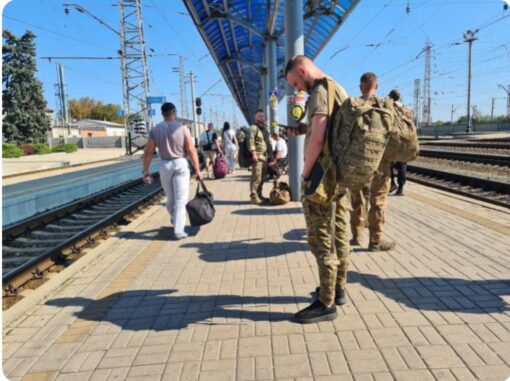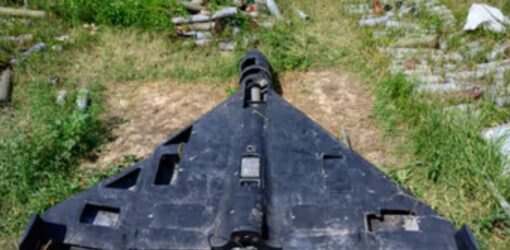In the eastern Ukrainian city of Sloviansk, long considered a place where Russian sympathies once ran deep, the war has begun to redraw loyalties in unexpected ways.
Years of cultural ties, shared language, and family bonds that once tethered the city to Russia are giving way to feelings of anger and betrayal as residents witness the destruction around them.
What was once a community of divided identities is gradually uniting around a common conclusion: Russia is no longer seen as a brother but as an aggressor.
The shift unfolding in Sloviansk Ukraine Russia tensions offers a powerful glimpse into how war reshapes not only politics but also the deepest layers of identity.
Sloviansk holds symbolic weight in the conflict. It was one of the first cities seized by pro-Russian militants in 2014 during the initial eruption of hostilities in Donbas, and its name became synonymous with separatist defiance.
Many families here had supported Moscow’s narrative that Ukraine was slipping into the orbit of the West at the expense of its Russian roots.
But more than a decade later, with battles still raging nearby and Russian rockets periodically striking the region, the tone among residents has shifted dramatically. Those who once voiced cautious sympathy toward Moscow now speak openly of disappointment, anger, and a newfound sense of Ukrainian belonging.
“I used to believe Russia was protecting us,” said one shopkeeper, recalling her early optimism during the separatist movement. “But what protection is this when they bomb our homes and kill our children? They destroyed the very people they claimed to save.”

Her voice, laced with both sorrow and resolve, mirrors the transformation of many in Sloviansk who have lived under constant fear of attacks. For them, Russia’s war is no longer an abstract political dispute but a daily intrusion of violence that has turned former sympathies into bitterness.
The generational divide also plays a significant role in the shifting attitudes. Older residents, who grew up during the Soviet era, had long felt cultural closeness to Russia through language, education, and tradition.
Younger Sloviansk residents, however, increasingly identify with a Ukrainian identity defined by resistance, resilience, and aspirations toward Europe. The war has accelerated this divergence, pushing even some older citizens to reconsider their allegiances.
Teachers note that children now speak more Ukrainian than ever before in classrooms, while parents deliberately encourage them to distance themselves from Russian cultural influences. This generational realignment underscores how war can accelerate social transformations that might otherwise take decades.
At the heart of the transformation in Sloviansk is the lived experience of violence. Russian shelling has killed civilians, destroyed infrastructure, and forced countless families to flee.
Those who remain often live without stable electricity, heating, or access to reliable healthcare. Humanitarian aid comes sporadically, but what leaves the deepest impression is not the assistance but the memory of destruction.
The emotional weight of losing friends, neighbors, and family members has cemented resentment against Moscow. In conversations with residents, what emerges most clearly is not just political anger but a deep sense of betrayal—how could a nation once seen as a “brotherly people” inflict such suffering?
The shift is not universal, however. A minority in Sloviansk still cling to pro-Russian views, often fueled by distrust of Kyiv’s government or nostalgia for the Soviet past. Yet these voices grow quieter as the brutality of the war becomes impossible to ignore.
Even among those who once called for closer ties to Moscow, there is hesitation to defend Russia openly, out of both fear of social backlash and genuine disillusionment.
Community leaders note that local solidarity now tilts more heavily toward supporting Ukrainian forces, with volunteers collecting supplies for soldiers and families displaying Ukrainian flags in neighborhoods that once avoided political symbols.
For the Ukrainian government, the transformation in Sloviansk represents both an opportunity and a challenge. On one hand, the erosion of Russian sympathy strengthens the national fabric at a time when unity is critical for survival.
On the other, Kyiv must navigate the delicate process of integrating communities that have long felt culturally ambivalent, ensuring that anger at Russia does not simply fade into resentment toward central authorities if reconstruction and stability do not materialize. Trust in Kyiv is fragile, and for many residents, promises of rebuilding and investment must translate into tangible results.
International observers highlight the symbolic significance of Sloviansk’s shift. If a city once viewed as a hotbed of Russian sympathy can pivot toward a more Ukrainian identity, it signals how deeply the war is reshaping the cultural landscape of the Donbas.
Analysts argue that the Kremlin’s narrative of protecting Russian speakers has collapsed under the weight of its own actions. Instead of safeguarding communities, Russia’s war has alienated them, fostering a stronger sense of Ukrainian nationhood even in places where Russian culture historically dominated. The case of Sloviansk becomes a microcosm of a broader transformation across eastern Ukraine.
Residents themselves often frame their journey as a process of awakening. Some describe their earlier pro-Russian sympathies as naive, a product of propaganda and nostalgia that crumbled under the harsh reality of war.
Others see their changing loyalties as a survival instinct, a recognition that aligning with Ukraine offers the only path to safety, stability, and dignity. Local conversations reveal a striking emotional evolution—from initial confusion and hesitation to clarity and conviction.
Where once loyalties wavered, there is now a sharper line drawn between belonging to Ukraine and rejecting the Russia that brought devastation.
As Sloviansk braces for further attacks, its people continue to grapple with the dual burden of survival and transformation. Markets reopen despite shelling, children attend school despite sirens, and families gather around dinner tables with the uneasy knowledge that tomorrow may bring new horrors.
Yet beneath the hardship lies a determination to move forward, to claim an identity defined not by fear or foreign influence but by resilience. In this way, Sloviansk mirrors Ukraine itself—a nation reshaped by war, strengthened by suffering, and increasingly unified by the conviction that its future lies apart from Russia.
The story of Sloviansk Ukraine Russia ties unraveling is a reminder of how war reshapes more than borders. It rewrites histories, redraws loyalties, and redefines who people believe themselves to be.

For the residents who once viewed Moscow as a cultural kin, the war has left scars too deep to heal with old myths of brotherhood. Instead, the pain of loss has given birth to a sharper identity, one rooted in defiance, resilience, and a new vision of belonging.
And for those still wavering, the echoes of rockets and the silence of empty homes tell their own story—of a city once divided, now turning its back on the nation that claimed to be its protector but chose instead to become its destroyer.


